- Home
- Cleaning Your Catch
- How to Clean a Fish
Here's How to Clean a Fish Quickly and Thoroughly
Knowing how to clean a fish properly is essential for anyone wishing to cook their catch, because if the gut isn't fully removed any bacteria left in it will rapidly cause the flesh to deteriorate.
And this could be really bad news, because if you eat the contaminated flesh you risk getting a dose of stromboid poisoning - which is not something you'll forget in a hurry.
OK, so you've killed the fish humanely and it now lies lifeless on your chopping board.
Now we're ready to commence the finning, scaling and gutting process.
Got all your equipment to hand?
The Equipment You'll Need for Cleaning Fish
A good quality selection of gutting and filleting knives is essential, together with the means to keep them sharp.
But one slip with knives like these and you can easily injure yourself, so wearing a cut-resistance glove on the hand that isn't holding the knife, is a very good idea indeed.
You can use the back of a knife for scaling the fish, but it will be easier and more efficient with a proper fish scaler.
Just one more thing - a stout pair of kitchen scissors.
First, Finning and Scaling the Fish
The first two steps of the cleaning process are:
- Remove all fins except the tail - you'll need that to hold on to - using a knife or heavy-duty scissors. This not only gets rid of most of the nasty spiky bits, but also makes the next step - scaling - easier.
- Grip the fish by the root of the tail and remove all the scales with the back of a strong knife or a scaler, scraping from tail to head against the lay of the scales.
If you intend to fillet the fish, there's no need to do anything else. You can now just slice off your fillets - and if you're going to skin them, you needn't have bothered to scale the fish either.
How to Clean a Fish:
A Small One - Like an Atlantic Mackerel
 The first cuts...
The first cuts...- Slit the underbelly from the vent to a point between the gills, cut
the gut as close to the gills as you can and again at the vent, then
remove them.
Take care not to rupture anything, particularly the green gall bladder which would otherwise contaminate the flesh with foul-tasting gall.
Alternatively, instead of cutting the head completely off, just cut down and through the backbone but no further. Then with pulling/twisting motion, pull the head off along with all the guts in a single movement;
- You will see a dark red vein-like strip running alongside the underside of the backbone. This, the bloodline, isn't great to eat. Use your thumbnail to remove it, or if necessary, ease it away with the point of a knife;
- If you want to leave the head on, the gills must be removed as these are almost as rich a source of flesh-rotting bacteria as the guts. Open the gill cover, cut through the bone under the lower jaw, snip the gills off top and bottom with a heavy-duty pair of scissors and remove;
- Wash out thoroughly in clean seawater and dry with a cloth, then store it in the fridge until you're ready to cook it. If it's small enough to fit in the pan you could cook it whole. Otherwise cut off the head just astern of the gills, and the tail. Still too big? You'll have to steak it.
How to Clean a Fish:
Next a Larger One - a Tuna for Example
You could gut the fish exactly as you would one of its smaller brethren as described above, but the following approach is much better if you intend to cut the fish into steaks. Most of these, other than where you slit the fish's belly, will be complete, round steaks with no flappy bits. It's how the professionals do it:~
- Cut off the fins and scale it as above, then
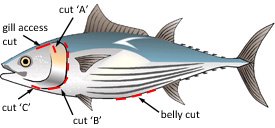 Cleaning and gutting a larger fish
Cleaning and gutting a larger fish- Insert your knife into the underside of the fish, about 6 inches (150mm) ahead of the vent, and slice through the abdominal cavity towards the vent. On reaching the vent (the fish's anus), don't cut into it but cut a tight circle around it;
- Insert your fingers into the cavity and pull out the digestive tract and all attached organs. Leave it whole, don't cut anything;
- Now you need to remove the gills. Making the cut at the top of the gill cover (both of them) where shown will give you better access for the next part of the procedure;
- Next, lift up the gill cover and make cut 'A' to detach the gill structure from skull, then make cut 'B' through the membrane around the perimeter of the gill, and finally make cut 'C' to detach it from the lower jaw;
- Now return to the belly cavity with a sliming knife. The main point
of these is that they don't have one - instead they're produced with a
curved end to the blade which reduces the risk of making a hole where
you don't want one.
Use it to scrape away all the membranes that attach the guts and other organs to the inside of the fish. Next, carefully scrape away the bloodline from the spinal cord. There should now be nothing attaching the guts and the gills to the inside of the fish;
- Finally, grab the gill structure and pull it, along with the guts and all other attached organs, out through the gill opening.
And that's it, job done. Just give it a wash out in seawater and it's ready for steaking, if that's what you intend to do with it.
But not all fish are round in section. Some bottom dwellers are distinctly flat, and these are extremely easy to clean.
How to Clean a Fish:
A Flatfish - Plaice, Flounder, Sole, Halibut etc
Incidentally, flatfish start out life in a normal vertical plane but at an early stage opt for a horizontal lifestyle on the seabed. This makes one of their eyes largely redundant, so it migrates around to the upper side where it can be of use. Pretty smart for a fish:~
 Cleaning and Gutting a Flatfish
Cleaning and Gutting a Flatfish- No need to cut off the fins, but you should scale the fish, then
- Feel for a soft spot behind the fish's head. This is the stomach cavity. Cut it open as shown here, then
- Scoop out everything you find inside with your finger.
That's it, job done again, one cleaned flatfish ready for filleting.
How to Clean a Fish:
Skates and Rays
 Cutting, keeping and discarding...
Cutting, keeping and discarding...We haven't yet mentioned how to clean fish like skates and rays.
That's largely because you don't really have to.
The wings are the only edible parts. Just cut them off as shown here and discard the rest.
Recent Articles
-
Sea Fishing Rods and Reels Must Be Compatible for a Balanced Outfit
Mar 08, 21 08:30 AM
A quality reel fitted to a quality rod doesn't necessarily make it a quality outfit. Your fishing rods and reels have to be properly matched if you're to get the best out of them, and here’s how -
Essential Lure Fishing Tips That All Saltwater Anglers Should Know
Mar 08, 21 04:51 AM
Which single lure fishing tip applies to trolling, jigging, baitcasting, spinning, fly fishing and any other branch of lure fishing? Well, it is the one at the top of this list -
Vital Jig Fishing Tips That You Really Cannot Afford To Miss!
Mar 07, 21 10:20 AM
Essential jig fishing tips to help you select the right lure for successful jig fishing, together with the techniques required to get the most out of your jig fishing outfit












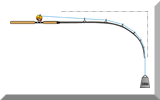



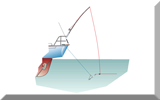





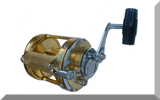


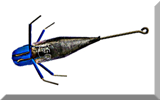



New! Comments
Have your say about what you've just read! Leave me a comment in the box below.